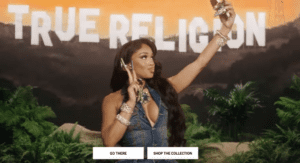 As consumers and the business world at large attempt to adjust to a new normal of “social distancing,” with new regulations put in place to stem the spread of Covid-19 seemingly enacted every hour, marketers are communicating to an anxious and concerned public with messages meant to calm, announce closures and present updated policies enacted to protect its customers. This weekend, for instance, Walmart and other major retailers announced they are modifying their store hours in order to keep shelves sufficiently stocked with products and stores clean.
As consumers and the business world at large attempt to adjust to a new normal of “social distancing,” with new regulations put in place to stem the spread of Covid-19 seemingly enacted every hour, marketers are communicating to an anxious and concerned public with messages meant to calm, announce closures and present updated policies enacted to protect its customers. This weekend, for instance, Walmart and other major retailers announced they are modifying their store hours in order to keep shelves sufficiently stocked with products and stores clean.
What makes this situation so unique is the speed at which the public is presented with new information, reports and expert advice that could alter brands’ contingency plans, sending marketing professionals in overdrive as they adapt to ever-evolving conditions in the marketplace. The examples are many. As a piece in PRNEWS points out, Starbucks penned a letter to consumers touting the precautionary steps its taking at its stores, thanks to lessons learned from experience gained in China. Princess Cruises, a business standing to suffer incredible economic losses as a result of the crisis, delivered a compassionate address via Twitter announcing a 60-day pause in ship operations. Tito’s Handmade Vodka has asked consumers not to use its product to make hand sanitizer, and Clorox, a brand whose products are currently in high demand, halted digital advertising on Amazon due to scarcity and admonished third-party sellers for price gauging.
How can marketers keep pace with the evolving landscape? PRNEWS presents the following tips for marketers and PR professionals crafting messages to audiences during this time of uncertainty.
*Keep prepared materials on hand and ready to distribute in the event that your event is canceled, closures must be communicated or new regulations require that your business alter its practices.
*Ensure your communications take an understanding tone and acknowledge your target audience’s concern.
*Share up-to-date data and links only from public health experts.
*Address your employees and how you will support them in the event of shifting work policies.
For a deeper dive into how brands have used messaging during this global crisis, read more in PRNEWS.
Other articles you might enjoy:
- Tips for Marketers Crafting Coronavirus Communications
- Rolling Coverage of the Impact of Covid-19 on Events
- Four Insights for Marketers Considering Digital Events Amidst Coronavirus Impact


 Network
Network

